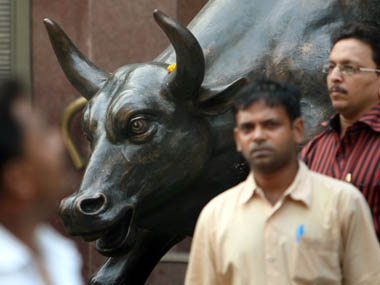New York: Investors gave a thumbs-up to the US Federal Reserve’s decision on Thursday to launch a massive stimulus program to buy $40 billion of mortgage-backed debt per month to stimulate the US economy. The Bombay Stock Exchange, which closed flat ahead of the US stimulus news, is likely to open sharply higher on Friday taking positive cues from US stocks, which hit multi-year highs.
Unlike other rounds of quantitative easing like QE1 and QE2, no dollar amount or time-limit was placed on the program. The Fed essentially announced that it would be purchasing $40 billion a month of distressed mortgage backed securities until further notice! That’s a huge commitment to jumpstart the US economy.
India will pay more for oil imports
According to economists, it’s a bullish move in the sense that pouring more money into the system inflates values. Stocks, gold, oil - basically everything except the dollar, should go up in value. Unfortunately, the US stimulus will weaken the dollar, boosting the price of dollar-denominated global commodities like oil. This is not so good for India, which imports around 70 percent of its oil.
[caption id=“attachment_453131” align=“alignright” width=“380”]  Here comes QE3. Reuters[/caption]
In a sign of things to come, oil rose in robust trading on Thursday, with Brent crude futures rising a sixth session by 94 cents to close at $116.90 a barrel, after the QE news.
“The Fed’s policy moves will likely push oil prices higher,” said John Kilduff, partner at Again Capital LLC in New York.
Positive for Indian stocks
It is likely to pump up the sentiment-driven Indian stock market, which loves good headlines.
“It will loosen up some of the liquidity for the Indian market,” Seth Freeman, CEO and chief investment officer at San Francisco-based EM Capital Management LLC, told Firstpost.
“I think the QE news, combined with the European Central Bank (ECB) bond-buying plan and the German court decision, provides an additional level of comfort for investors. The commitments from the ECB and, now, the Fed creates a sense of certainty that things are moving in the right direction and the perception that the world economy will continue to improve,” added Freeman, who advises foreign funds on implementing investments in India.
Freeman, who has managed a US listed India-dedicated mutual fund, says fund managers are currently light on emerging market stocks and are likely to swoop in now to “fill out the holes” in their portfolios.
“There is a phenomenon of window-dressing that happens at the end of reporting periods - near the end of a quarter and most certainly the end of the year - when fund managers who may have been underinvested in certain countries and sectors will need to buy shares to improve their portfolio reporting. Better investor sentiment and the need to fill out the holes in their portfolio will activate fund managers. India will get its piece of that type of spending on shares,” said Freeman.
The QE3 news sent emerging markets soaring on Thursday and the MSCI Emerging Markets index rose nearly 3 percent. High volume BRICS stocks did even better.
“The secular growth story for the emerging markets in general is still a lot healthier than the developed markets,” said Marc Tommasi, head of global investment strategy at Manning & Napier in New York, told Forbes.
“We don’t expect emerging market equities to go back to historic levels, but they’ll be better than they have been recently,” Tommasi said.
The political brouhaha over the stimulus
The markets loved Fed Chairman Ben Bernanke’s QE3 decision, but the Republicans charged that it was a “political effort” to help President Barack Obama ahead of the November elections. Republican presidential nominee Mitt Romney said that Bernanke was giving the US economy the biggest injection it’s ever seen due to the abject failure of Obama’s policies.
For his part, Bernanke defended his action, saying it was an effort to improve crushing US unemployment.
“The employment situation … remains a grave concern,” Bernanke told reporters. “While the economy appears to be on a path of moderate recovery, it isn’t growing fast enough to make significant progress reducing the unemployment rate.”


)
)
)
)
)
)
)
)
)



